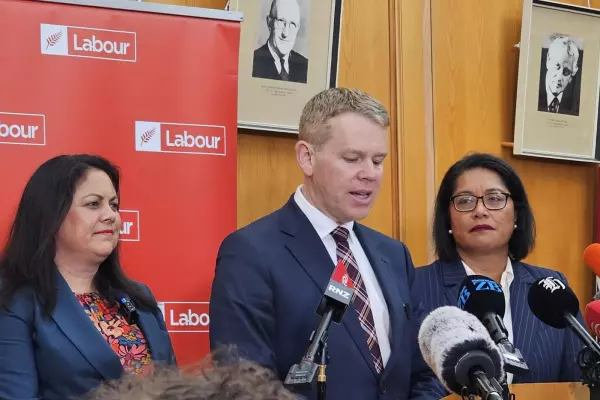I took out some five-year borrowing last month. I normally favour the one-year rate.
My reasoning was simple. The outlook for inflation no longer looks so one-sided. Inflation is not around the corner, but a credible case can be put on the table.
The Reserve Bank will not be spooked by inflation if we see some. It is in their remit to get it higher. They will likely let some inflation take hold, and cheer before acting.
But the Reserve Bank could be facing a very different environment in a couple of years, and borrowers too (with a particular emphasis on the “could”). It is about identifying risks and evolving themes.
Some argue the abundance of central bank driven liquidity (the money printing), recovering demand as vaccines appear, and constrained global supply, will see inflation appear.
It already has if you include asset prices in the inflation basket.
The liquidity argument is not the one that has my attention.
Wider forces in play
I am more interested in the evolution of secular topics which could influence the trajectory for inflation.
Some major themes have contributed to low inflation. Globalisation has delivered cheaper goods. Technology is driving down costs, driving competition and pricing transparency. We have shifting demographics and entrenched low inflation expectations.
Labour or employees' (what we call compensation of employees) share of gross domestic product (the economic pie) has fallen across most of the OECD over a long period.
That is a fancy way of saying wage growth has been suppressed. There have been structural drivers including technological innovation, globalisation, and diminished worker bargaining power.
Many of these contributors to low inflation remain in place but some are unwinding and new pressures emerging.
Globalisation is on tenterhooks. Global trade peaked as a share of global gross domestic product just prior to the global financial crisis. It has flatlined since. It looks set to reverse with covid-19 exposing supply chain vulnerabilities.
Supply chain vulnerabilities are not just about sourcing goods or the costs of getting items in and out. New Zealand has had an excessive reliance on migration and border closure which has exposed decades of under-investment in skills and people. Pressure on pay rates is mounting.
Nationalism has been rising for some time as a narrative and is pushing against globalism.
The role of government
A building presence of government will be a key theme for the next decade. There is a strong role for government across the economy in some areas. But temporary government covid-19 support risks morphing into a bureaucratic costly unproductive goliath, even more unfit to handle an environment where the pace of change is going exponential.
We have the costs of dealing with climate change. It needs to be dealt with. But who wants to pay?
City folk should look at what a farm management (environment) plan entails and consider the “costs” of a household equivalent. The environment is everyone’s problem.
Labour cost tensions
One area has my particular attention.
It is the likely evolution of labours' share of the economic pie, and whether pressure to get that share up evolves into inflation and necessitates higher interest rates.
We should be aspiring for higher incomes and wages, though ideally through productivity and a bigger economic pie.
Labours' share of gross domestic product (the income measure) in New Zealand was over 50 percent in the 1970s and early 80s. It dropped to just over 40 percent in the early 1990s and has remained in a 40-45 percent range since.
Labours’ share of the economic pie is currently 43 percent. It is a crude expression of the share, as within it you have both chief executives and recipients of the minimum wage.
The policy agenda is about getting that number up. Other countries will see similar pressure. It will rise over the coming years as pay and non-pay demands become more prominent. Some pay-back is warranted, but how far is debatable.
Labour scarcity for key skills, with the migration tap turned off, is accelerating wage pressures in some sectors.
A high labour share of GDP has been associated with inflation and higher interest rates historically when cost-push inflation dominated. Cost-push inflation was the immediate passing on off costs into consumer prices. We still see it in some areas such as fuel.
Cost-push inflation has been usurped by demand-pull inflation for the past 20 years. Demand conditions dictate the ability to put up prices. Margins become the absorption variable.
Generally, it has been hard to pass cost increases on as consumers push back and seek alternatives. And in a globalised world, they have been abundant.
That demand-pull model still stands, but we have not seen the current extent of intensifying cost pressures for a long time. Nor the shift in societies attitudes, government policy and expectations.
A collision is pending. Firms are seeing a lot of cost increases. Will they pass on rising costs or will margins compress keeping inflation low?
ANZ’s Business Outlook survey has been consistently reporting rising costs for goods and services but not yet seeping into general inflation.
ANZ’s Consumer Confidence survey reports inflation expectations of 4.3 percent. That is very disconnected with business equivalent measures and possibly signalling more about wage expectations than inflation.
Evolving secular shifts will not unlock inflation overnight. But the combination could be very powerful over time.
Cameron Bagrie is an independent economist and his views do not represent financial advice.














